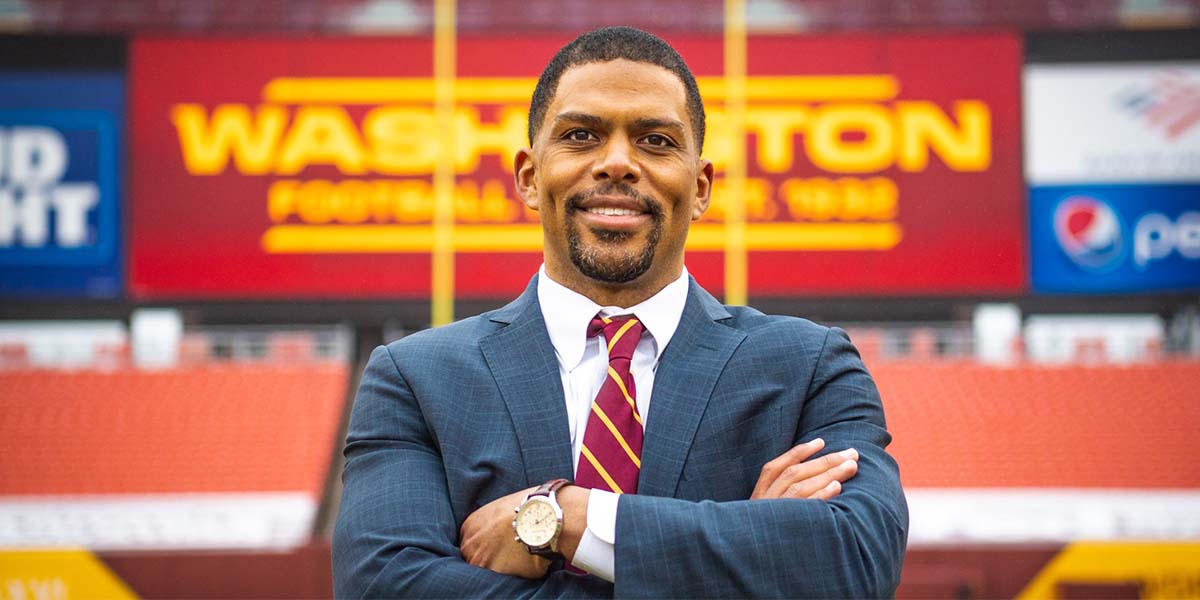| Our best ideas, quick and curated | February 18, 2022
|
| This week, why CEOs should move optimism to the top of their agendas. Plus, traditional banks fall behind the competition in how they are valued by capital markets, and a forthright interview with Jason Wright, president of the newly renamed Washington Commanders, on how the game is played—both in the NFL and in the corporate world. |
|
|
|
| Here’s a positive thought. What if CEOs took a stance of clear-eyed optimism and reflected it in their business agendas for 2022 and beyond? This is not a rallying cry for wishful thinkers but a call to focus on growth—not only for the corporate bottom line but also to create greater economic security, material comfort, and well-being for more people than ever before. |
| Hunkering down. Organizations have tried to cushion their employees, customers, and operations from the productivity and growth “jolts” resulting from the COVID-19 pandemic.The list of uncertainties continues to grow: the impact of the Omicron variant, inflation, a misaligned labor market, supply chain shortages, energy market volatility, and rising geopolitical instability. |
| Looking up. While these disruptions remain challenging, CEOs who steer through them with growth in mind could reshape their long-term strategies to reflect—and define—the postpandemic world. For example, renewing capital stock in US manufacturing could help the industry realize its full potential and get billions of dollars of investment flowing. This would serve to modernize and digitize manufacturing infrastructure and trigger a virtuous cycle of increased economic activity in communities across the country. Bolstering investments in this sector could also play a role in tackling place-based inequalities from coast to coast, particularly in communities left out of the booming tech and finance industries. |
| Branching out. Seven tests can help CEOs gauge whether they are poised to take advantage of the next growth jolt. For instance, are you spending as much time creating new businesses as you are improving your existing businesses? Is your organization ready for the energy transition and the immense economic impact it could have? Are you embracing new technology as quickly and holistically as you did new ways of working at the start of the pandemic? We look at these questions and more in “The CEO agenda in 2022: Harnessing the potential of growth jolts.” |
| Stepping back. Many leaders are mulling their roles amid all this change. In mid-2020, McKinsey published “The CEO moment: Leadership for a new era,” in which CEOs discussed the “pressurized operating environment” that had nevertheless “unfrozen” many aspects of the role, from bolder aspirations to tapping the power of peer networks. As Larry Fink, the CEO of BlackRock, put it, “Going forward, there is going to be a lot more focus on society, customers and clients, family, and employees.” |
| Pressing forward. Already, amid the biggest disruption of our lifetimes, e-commerce has expanded, and new business models such as virtual healthcare have taken off. Savings rates have increased, and corporate balance sheets have gotten stronger. This moment offers immense potential to chart the course for the next decade and beyond, from the advancement of medicines to the reskilling revolution to the spread and intensification of digital and analytics. One near-certain scenario: a world on the cusp of a new age of prosperity—if business leaders respond skillfully. |
|
|

|
| OFF THE CHARTS |
| Where do banks rank in the great divergence? |
| The banking system is at least as solid as it was before the pandemic—and much healthier than after the global financial crisis. But can we say a bright and smooth future lies ahead for banks and their shareholders? Not exactly. According to the latest edition of McKinsey’s Global Banking Annual Review, traditional banks, which rely on balance sheet business, are falling behind the competition in how they are valued by capital markets. Financial specialists and fintechs are valued more like tech companies in other industries, while traditional banks are valued similarly to utilities (with a narrow gap between top and bottom performers). The report delves into the sources of this divergence and offers possible solutions for laggards to catch up.
|
|
|
|
|

|
|
|
| INTERVIEW |
| ‘If I set a goal, I am obsessive about getting there’ |
| Jason Wright, president of the Commanders, Washington’s newly rechristened football team, spoke with McKinsey’s Black Leadership Academy about the people and experiences that have shaped his worldview. He discussed how getting cut “nine times in my first season and a half” in the NFL made him even more determined to succeed, examined the need for brashness and braggadocio in corporate culture, and emphasized how important it is to “tell your story in a way that helps others believe in and understand your value.” |
|
|

|
|
|
| TECH FOR EXECS |
| Eliminate the IT spaghetti with APIs |
| Our experts serve up a periodic look at the technology concepts leaders need to understand to help their organizations grow and thrive in the digital age. |
| What it is. In a world flooded with acronyms, API (application programming interface) is one of the more important ones to know about. Essentially, it’s a piece of software that acts as an intermediary between two different applications, programs, or systems to allow them to talk to each other and exchange information in a well-defined standard. |
| Why it’s important. For many of us, when we peek behind our TVs, we see a mess of wires going in and out of all the various related devices. Now, imagine magnifying that millions of times. That’s what many IT architectures look like: a massive “spaghetti” of 1-to-1 connections between programs and applications. This complexity is often what makes changes to IT so cumbersome, time consuming, and expensive.
|
| APIs eliminate the spaghetti by removing the need to create a single solution for accessing a piece of information to execute a task (often called a “point to point” solution). They can grab data and information—securely—that are often locked into complex legacy systems without having to develop equally complex constructs (such as programs or interfaces) to access those systems and their underlining architecture. Instead, APIs help integrate multiple sources of information into one place to execute a given task. For example, one bank wanted to simplify how its customers accessed licensing information that existed in the systems of its government’s tourist agency. Rather than developing a program for each customer, the bank created an API that its customers could easily plug into to access the licensing information. In this way, APIs enable businesses to more easily monetize data, integrate partnerships, and accelerate innovation. |
| Buyer beware. The utility of APIs has been so convincing that organizations can get carried away, resulting in a mess of redundant, overlapping, and conflicting APIs. So talk to your IT leaders about developing a process and team to better oversee development, set guidelines and standards, ensure maintenance, and organize APIs so that they are easy to find and reuse. |
| What technology concepts would you like us to help explain next? Let us know. |
|
| — Edited by Barbara Tierney |
|
|
Share this Tech For Execs
|

|

|

|
|
|
|
|
| BACKTALK |
| Have feedback or other ideas? We’d love to hear from you. |
|
 |
|
|
Did you enjoy this newsletter? Forward it to colleagues and friends so they can subscribe too.
Was this issue forwarded to you? Sign up for it and sample our 40+ other free email subscriptions here.
|
|
|
This email contains information about McKinsey’s research, insights, services, or events. By opening our emails or clicking on links, you agree to our use of cookies and web tracking technology. For more information on how we use and protect your information, please review our privacy policy.
|
|
You received this email because you subscribed to The Shortlist newsletter.
|
|
|
|
Copyright © 2022 | McKinsey & Company, 3 World Trade Center, 175 Greenwich Street, New York, NY 10007
|
|
|
|





